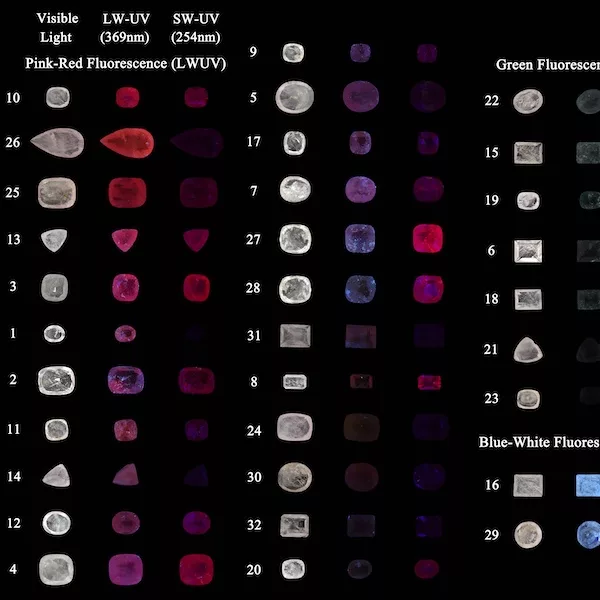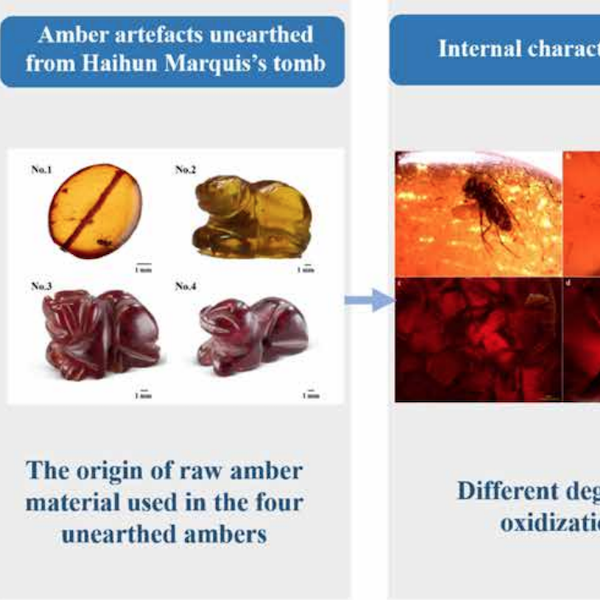A study of Chikayama’s gem and mineral collections and building a gem museum
By Ahmadjan Abduriyim
Abstract
Based on the belief that “a gemstone is art and science,” Mr. Akira Chikayama devoted his life to gemological research and study for the benefit of people involved in gemstones and dedicated himself to the promotion of gemological education in Japan. The author by chance came across his vast collection comprising more than 30,000 precious rough gemstones, crystals, minerals, rocks, fossils and meteorites from all over the world. In 2022, “The Chikayama’s Collection, GSTV Gem Museum” was established to make gem researchers, gemmologists and connoisseurs aware of this fascinating outstanding collection. We will continue to introduce the findings and insights gained from the collection both nationally and internationally

Introduction of Akira Chikayama
With the aim to exchange research and studies in gemology, the first International Gemmologial Conference IGC was held in 1952 in Switzerland. Mr. Chikayama participated at this biennial conference since 1966 and by this laid the foundation of gemological education in Japan. By that time, he was teaching at the Faculty of Engineering, University of Yamanashi, and the Yamanashi prefectural Jewelry Art College as well as giving instruction in fashioning hard and brittle gem materials at the Yamanashi prefectural Institute of Polishing Industry. In 1960s he started visiting gem mines all over the world to get the authentic impression of local gem deposits and collect rough stones directly at the sites. He also visited many international jewelry and mineral shows annually to collect and bring fine specimens and the latest information back to Japan for gemological education and research purposes. The number of the specimens that had been collected over a period of more than forty years reaches over 30,000, which is comparable to the samples collected by the renowned gemologist Dr. Edward J. Gübelin for gemstone research. As more than 20,000 students have studied these samples and graduated from Chikayama’s gemological education courses, he is also known as the ‘pioneer of gemology’ in Japan. He wrote numerous articles, books and dictionaries with great detail – mostly in Japanese, providing us until today with valuable resources and knowledge (Chikayama, 1969-78, 1973, 1979-91, 2005, 2013). Akira Chikayama, one of the world’s leading gemology educators, who devoted his entire life to the education and research in gemology, died in 2007, and his countless precious specimens had been left in his study room since then. In 2016, the author had a chance to visit the Chikayama’s Gem Laboratory for the first time. Having felt strongly about the fascination, rarity, and research value of the specimens, the author had a desire to re-collect, organize, and conserve them to play an important role in delivering the wealth, preciousness and attractiveness of these precious specimens to the public through these actual items. In March 2022, all the collection was moved to the GSTV Gemological Laboratory to establish The Chikayama’s Collection, GSTV Gem Museum. Since then, findings and insights from the collection are regularly presented in articles to gemstone connoisseurs and researchers. In addition, selected specimens are now used for display, education, and research purposes.


Studying the Chikayama’s collection and building a gem museum
The Chikayama’s Collection comprises specimens and samples such as about 600 rocks, 2,000 minerals, 25’000 gems and rough stones with matrix, 500 transparent gem crystals with distinct crystal forms, 2500 faceted stones, 300 synthetics and imitations, 50 fossils, and 10 meteorites, as well as hundreds of books and magazines and photos. These samples were neatly separated into categories such as the country of origin, rock minerals, excellent gemstone crystals, faceted stones, synthetic stones with each manufacturer, specimens to be used in practical courses for students, and master stones, and the information such as mineral names, gem names and country of origin are described both in English and Japanese. A project to establish the Museum was initiated in March 2022. All items in the collection were cleaned, numbered, and grouped into mineral names, gem varieties and any other classification required. The country, state or region from where Mr. Chikayama collected the specimen and which was recorded by himself, and the geographical information reported for each mine name were re-organized to be recorded. The specimens were divided into two parts: a) for study and b) for display, with the latter being classified and displayed in three separate Museum sections: “Earth Miracles”, “Crystals World” and “Education of Gemology”. Minerals and rough gemstones placed in the “Earth Miracles” section are classified into five major categories related to their formation process: related to igneous rocks, pegmatites, hydrothermal formations-gas, regional-contact metamorphic rocks, and sedimentary rocks, and specimens with matrix are displayed as their examples. In the “Crystals World” section, single crystals of colored gemstones with beautiful crystal forms from each different country are displayed based on the seven crystal systems as shown below: Cubic: diamond, garnet group, spinel, fluorite, hematite and pyrite. Hexagonal: beryl group, apatite, calcite/aragonite, phenakite and benitoite. Trigonal: corundum group, variously colored tourmalines, quartz (amethyst-citrine), agate, rhodochrosite and smithsonite. Tetragonal: zircon, rutile, vesuvianite (idocrase), scapolite, anatase and apophyllite. Orthorhombic: topaz, chrysoberyl group, cordierite, peridot, zoisite (tanzanite), celestite, sillimanite, sinhalite, kornerupine, andalusite, prehnite and thomsonite. Monoclinic: spodumene (kunzite/hiddenite), orthoclase/ moonstone, titanite, diopside, euclase, mica, gypsum, and brazilianite. Triclinic: amazonite/sunstone/andesine/labradorite, kyanite and amblygonite. Among these exhibition specimens particularly, a suite of three types of Japanese law quartz twins is extremely rare and enthralling.
The “Education of Gemology” section displays more than 2,000 inorganic or organic, faceted or polished (cabochon) natural gemstones and synthetic stones, either of transparent, translucent or opaque appearance. These specimens had long been used for gemological education purposes. With the basic gemological information attached to each specimen, they are quite suitable for measurement of gemological properties. Gemstones with a wide variety of inclusions are also displayed. This area also includes different types of master stones, various portable/handheld gem testing devices and books, and is designed so that visitors can browse and understand easily.

Planning of future research
In addition to the three sections mentioned above, storage shelfs are installed in the museum and thousands of rough gemstones (such as ruby, sapphire, emerald, spinel, alexandrite, chrysoberyl, peridot, aquamarine, and Paraiba tourmaline) and hundreds of minerals and rocks collected from primary and the secondary gem deposits all over the world are stored, separated by country. The historical collection created by Prof. Chikayama is of great importance and is expected to be used for studies about country-of-origin determination of gems. To begin with, we will gather data from these specimens using advanced scientific analyses (such as inclusion identification, spectral analyses using FTIR, UV-Vis, Raman or Photoluminescence, quantitative analysis for chemical composition, trace element analysis and isotope analysis) and add to our current database, and we will start expanding the education project with our collaborative research partners.
References:
- Chikayama A., 1969-78. Gemmology. Monthly journal, in Japanese. No.1-98.
- Chikayama A., 1973. Gem Identification by their inclusions, in Japanese, pp. 246.
- Chikayama A., 1979-91. The Gemmological Review. Monthly journal, in Japanese, No.1-12 for per year.
- Chikayama A., 1982. Gemstones – their beauty & science, in Japanese, pp. 263.
- Chikayama A., 2005. The wonder of minerals & gemstones, in Japanese, pp. 218.
- Chikayama A., 2013. Dictionary of gemstones & jewelry, 1st edition, translated by Stephen H. Gill, pp. 652.




